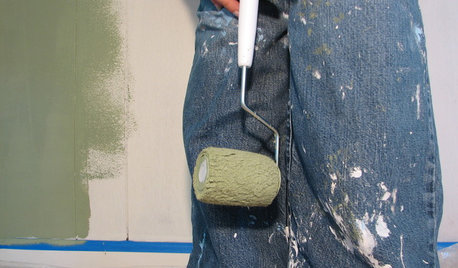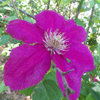I Quit !!
plainwellcandy
16 years ago
Related Stories

COLORPick-a-Paint Help: How to Quit Procrastinating on Color Choice
If you're up to your ears in paint chips but no further to pinning down a hue, our new 3-part series is for you
Full Story
UPHOLSTERYFabric Focus: There's Nothing Quite Like Linen
Classic, understated, durable and mildew-resistant, linen is a casual fabric fit for any home
Full Story
LIGHTINGDesign Details: Quite the Light
20 Ways to Light Up Your Home With Creativity and Surprise
Full Story
HOME TECHQuit Playing Around With Your Game Console
Gaming systems can do so much more than just run games — they can streamline your home activities and improve your life
Full Story
FUN HOUZZEverything I Need to Know About Decorating I Learned from Downton Abbey
Mind your manors with these 10 decorating tips from the PBS series, returning on January 5
Full Story
PAINTINGHelp! I Spilled Paint on My Clothes — Now What?
If you’ve spattered paint on your favorite jeans, here’s what to do next
Full Story
THE POLITE HOUSEThe Polite House: Can I Put a Remodel Project on Our Wedding Registry?
Find out how to ask guests for less traditional wedding gifts
Full Story
LIFEYou Said It: ‘I Knew This Home Had to Be Mine’ and More Quotables
Design advice, inspiration and observations that struck a chord this week
Full Story
WHITEHow to Pick the Right White Paint
White is white, right? Not quite. See 8 white paint picks for 8 very different effects
Full Story
COFFEE WITH AN ARCHITECTA Few Things I Would Like to Ask Frank Lloyd Wright
It could take a lifetime to understand Frank Lloyd Wright's work — less if we had answers to a few simple questions
Full Story






nckvilledudes
alina_1
Related Professionals
West Milford Landscape Architects & Landscape Designers · Beavercreek Landscape Architects & Landscape Designers · Oconomowoc Landscape Architects & Landscape Designers · Harvey Landscape Architects & Landscape Designers · Belvedere Park Landscape Contractors · Brownsville Landscape Contractors · Burien Landscape Contractors · Deerfield Beach Landscape Contractors · Downey Landscape Contractors · Elmhurst Landscape Contractors · Long Branch Landscape Contractors · Mequon Landscape Contractors · Methuen Landscape Contractors · Richmond Landscape Contractors · Whittier Landscape Contractorsjanetpetiole
leslie197
nckvilledudes
nckvilledudes
janetpetiole
leslie197
mamasalvo
buyorsell888
janetpetiole
buyorsell888
leslie197
buyorsell888
buyorsell888